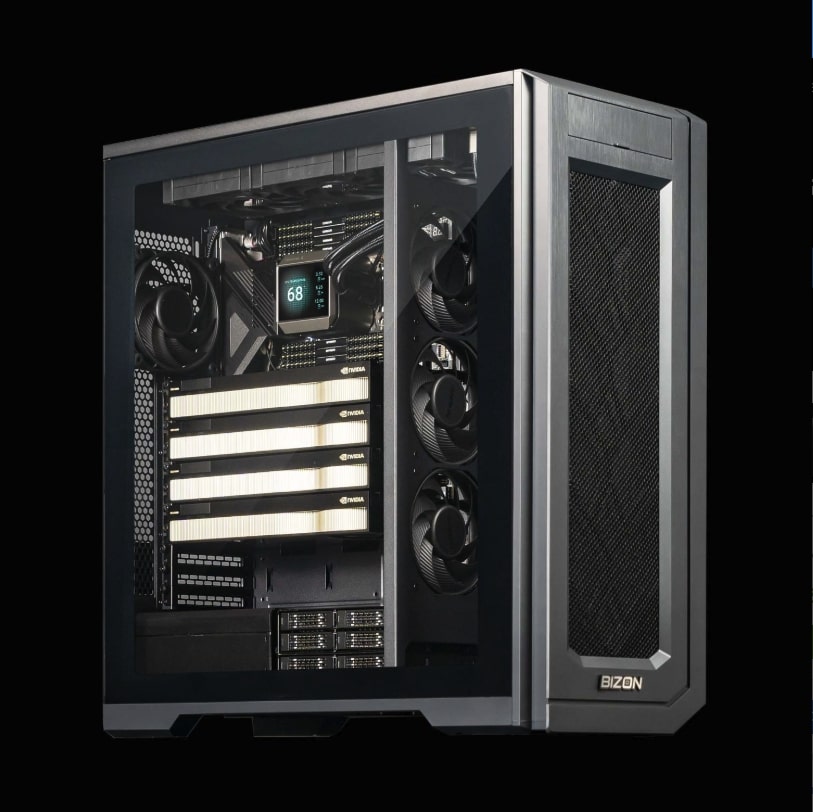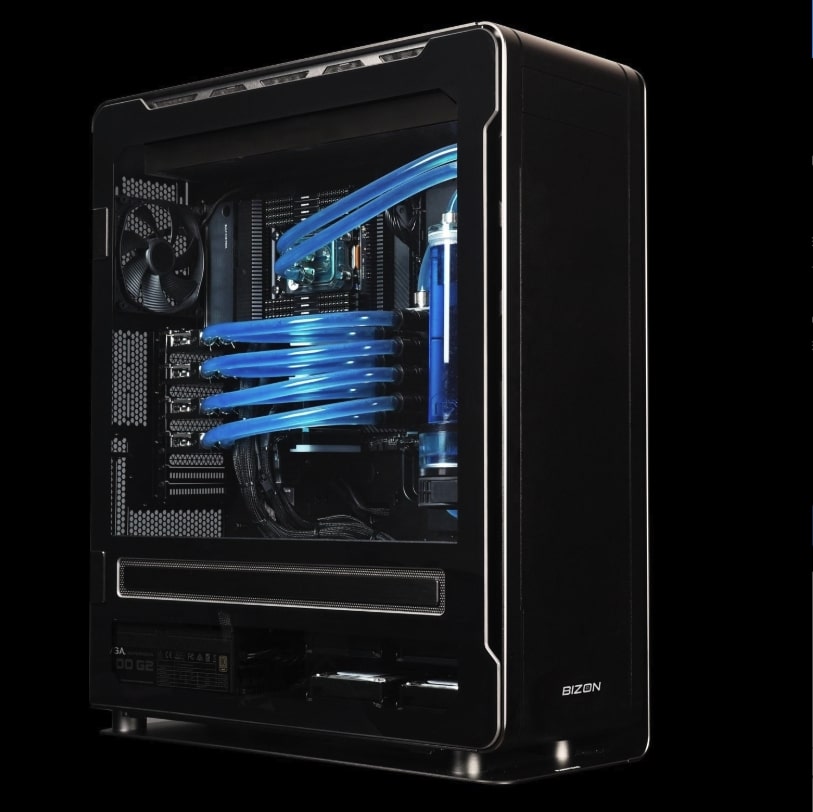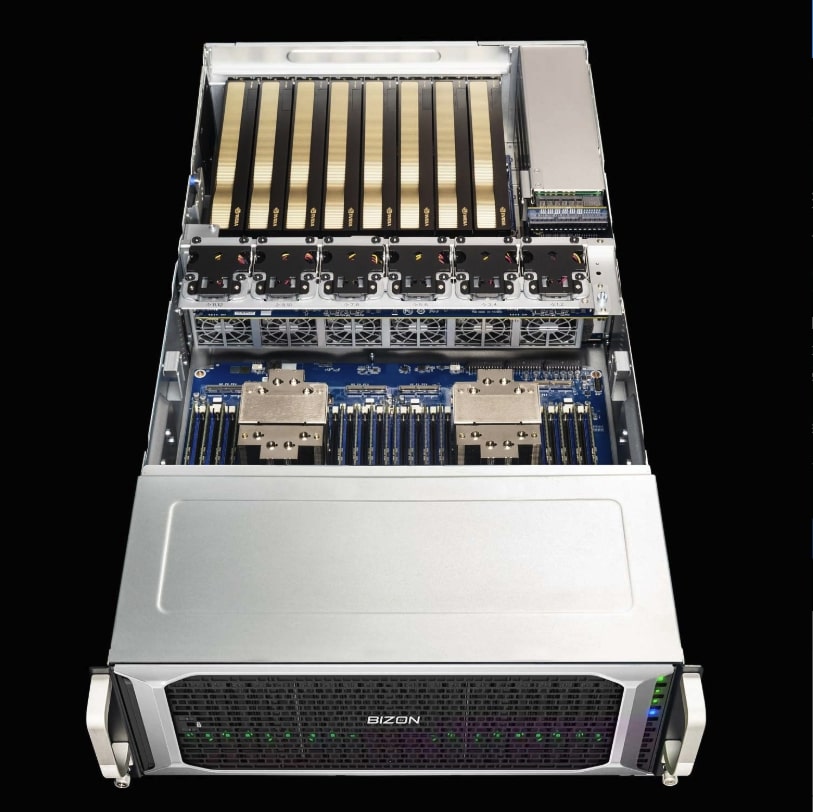Nvidia GTC 2025 Highlights – Recent Biggest Announcements
Introduction
GTC 2025 proved to be a dynamic convergence of groundbreaking technology, featuring AI breakthroughs, next-generation GPU architectures, and even a foray into quantum computing. Spanning multiple days of keynotes, demos, and expert-led sessions, the conference showcased how NVIDIA’s hardware and software are driving innovation across industries—healthcare, automotive, finance, and beyond.
The announcements emphasized how advanced architectures—codenamed “Vera Rubin,” new HPC solutions like “Feynman,” inference optimizations such as “Dynamo Inference,” and the emergent “Kyber CPO”are all part of a strategic push to propel AI toward more context-aware and robust capabilities.
Major Announcements from GTC 2025
Breakthroughs in AI and Machine Learning
One of the most anticipated announcements was NVIDIA’s unveiling of advanced AI frameworks geared for higher-level cognition and “reasoning.” Jensen Huang, NVIDIA’s CEO, introduced new neural network topologies designed to train and infer faster while handling more complex tasks—ranging from medical image analysis to natural language processing in real time.
A standout among these breakthroughs was “Dynamo Inference,” a suite of optimization tools accelerating deep learning inference on large language models (LLMs). According to conference materials, Dynamo Inference can significantly reduce latency, a major pain point for applications like real-time language translation, chatbots, and large-scale recommendation engines.
Next-Generation GPU Architectures
NVIDIA showcased its new GPU family code-named “Vera Rubin,” developed to address the ever-growing computational demands of AI. Building upon the success of earlier generations, these GPUs promise higher FLOPS, better memory bandwidth, and enhanced energy efficiency.
Another big reveal was the “Kyber CPO” technology, aiming to streamline GPU resource sharing across both AI training workloads and more conventional HPC tasks. By dynamically allocating resources, Kyber CPO allows data centers to handle variable demands efficiently—balancing HPC simulations, AI inferences, and GPU-accelerated databases without requiring massive overprovisioning.
Innovations in Quantum Computing
GTC 2025 also took a leap into quantum computing. NVIDIA discussed new hardware prototypes and software frameworks designed to help researchers integrate quantum circuits into existing high-performance computing (HPC) workflows. This hybrid approach seeks to solve problems—from cryptography to molecular simulations—that exceed the limits of classical computers alone.
AI and Machine Learning: The Pivotal Role at GTC 2025
Reimagining AI Models for “Reasoning”
A recurring theme at this year’s event was the next generation of AI models moving beyond straightforward classification tasks. NVIDIA’s Jensen Math framework, teased during the keynote, is a conceptual approach to bridging large-scale neural networks with symbolic logic. The company’s aim is to enable AI systems that can parse complex reasoning steps—improving their interpretability and reliability across varied applications, including autonomous systems and advanced scientific research.
Autonomous Systems and Robotics
Advances in AI frameworks naturally extend to autonomous vehicles and robotics. GTC 2025 introduced new sensor-fusion algorithms that merge lidar, radar, and camera data in real time, helping machines understand their environment with greater accuracy. Demonstrations included next-level robotic arms trained for precision assembly using reinforcement learning—cutting tasks from hours to minutes.
AI in Cloud and Edge Computing
Another highlight was how NVIDIA is pushing AI further toward the edge. New cloud-native services, enhanced by Kyber CPO, allow developers to deploy scaled-down versions of large AI models on edge devices—from factory automation systems to drones and medical diagnostics equipment. Such distributed AI frameworks ensure real-time responsiveness, crucial when connectivity is limited or data compliance rules prevent extensive cloud processing.
The Future of GPU Technology Unveiled
Vera Rubin Architecture
The centerpiece of NVIDIA’s GPU roadmap is the “Vera Rubin” architecture. Engineered for large-scale AI model training and HPC workloads, this next-gen GPU architecture boasts:
- Higher Tensor Core throughput and precision scaling
- Enhanced multi-instance GPU features to isolate concurrent workloads
- Better cooling solutions and improved thermals
Early benchmarks revealed performance leaps over previous-generation GPUs, promising significant speedups in training times and inference latency.
Performance Benchmarks
In official demos, the Vera Rubin GPUs ran large-scale language models more efficiently, reducing training costs by leveraging advanced parallelism and memory interconnects. Comparisons with the prior generation showcased up to a 40–60% speedup in certain HPC tasks, including computational fluid dynamics and astrophysics simulations (a nod to Vera Rubin’s legacy in astrophysics research).
Broader Industry Impact
From AAA gaming studios seeking real-time ray tracing to scientific institutions crunching exabyte-scale data, the new GPU lineup is set to redefine performance ceilings. Tools like NVIDIA Omniverse—now supercharged by Vera Rubin GPUs—promise more realistic virtual worlds, accelerated collaborative design, and advanced simulations for industries spanning architecture, product development, and film.
Quantum Computing: The Next Frontier
Feynman Hybrid Platform
Building on prior research, NVIDIA’s “Feynman” focuses on seamlessly integrating quantum processors with classical HPC clusters. The architecture aims to tackle problems that are inefficient or near-impossible for standard HPC alone, such as advanced cryptography, complex optimization, and molecular modeling at the quantum level.
Potential Applications
Financial institutions expressed keen interest in the Feynman platform for portfolio optimization and risk modeling. In pharma, drug discovery processes could see exponential speed-ups thanks to the synergy between quantum computing’s ability to simulate molecular structures and HPC’s large-scale data analysis.
Collaborations and Partnerships
NVIDIA announced collaborations with academic institutions and startups specializing in quantum algorithms. By forging alliances across sectors, the aim is to create a robust software ecosystem that will accelerate the commercialization of quantum computing—helping businesses test and deploy quantum-enhanced services without rewriting massive codebases from scratch.
Health and Life Sciences: Technological Innovations
AI-Driven Drug Discovery
A prominent focus at GTC 2025 was the intersection of AI and healthcare. NVIDIA highlighted new tools that use the “Dynamo Inference” engine to sift through billions of molecules and predict how they might bind to specific protein targets. This approach radically shortens the initial screening phase for drug development—shaving months or even years off typical discovery timelines.
Computational Biology and Genomics
Enhanced GPU acceleration for genomic sequencing and analysis also took center stage. By leveraging large memory capacities and faster data throughput, scientists can process genomic data sets at scale to identify mutation patterns, track disease spread, and develop personalized medicine strategies.
Real-World Case Studies
One case study featured a university hospital that integrated AI-driven diagnostics to detect early signs of degenerative diseases, like Alzheimer’s and Parkinson’s, through patient imaging scans. With the new Vera Rubin GPUs, inference times plummeted, enabling near-instant feedback. Another showcased how HPC + quantum solutions can simulate protein folding more accurately, assisting in complex drug design.
Key Takeaways from GTC 2025
GTC 2025 underscored NVIDIA’s commitment to ushering in a new era of “reasoning” AI, supported by robust GPU advancements and an early but significant investment in quantum computing. The Vera Rubin architecture, Dynamo Inference, Kyber CPO, and the Feynman hybrid platform all illustrate NVIDIA’s strategy to push computational capabilities beyond current limits—driving innovation across sectors as diverse as autonomous vehicles, healthcare, astrophysics, and large-scale enterprise computing.
Collaboration was a running theme, with NVIDIA forging new alliances to broaden quantum hardware accessibility and accelerate real-world AI deployments. The big picture: we are moving closer to AI systems that can tackle tasks once considered too complex—offering faster, more accurate, and more flexible solutions to global challenges.
Spark, RTX GPUs, and the New GB300: Expanding the GTC 2025 Ecosystem
Accelerating Data Analytics with Spark
As massive data sets drive AI innovation, NVIDIA placed a spotlight on GPU acceleration for Spark—the popular big-data processing engine. GTC 2025 sessions demonstrated how multi-GPU clusters can drastically reduce ETL (Extract, Transform, Load) times and enable real-time analytics. By offloading computationally heavy operations to GPUs, enterprises can handle large-scale streaming data faster and more efficiently than ever before.
With newly introduced libraries optimized for Spark, data scientists and ML engineers can scale their workflows seamlessly from prototyping on a single workstation to production clusters. This focus on Spark underscores NVIDIA’s vision of democratizing AI—enabling not just HPC experts but also big-data teams to benefit from GPU acceleration.
Pushing Visual and AI Boundaries with RTX GPUs
While the flagship Vera Rubin GPUs target deep learning and HPC, NVIDIA also expanded its RTX GPU lineup for creators, gamers, and advanced visualization workloads. The new RTX series brings:
- Enhanced ray-tracing cores for more realistic lighting and reflections
- Improved AI-driven denoising and upscaling features
- Seamless integration with applications using real-time physics simulations
These GPUs retain the hallmark GeForce and Quadro capabilities but gain additional performance boosts from the architectural innovations showcased at GTC 2025. Whether in game development, virtual production studios, or data visualization for scientific applications, the next wave of RTX promises higher fidelity, lower latency, and a smoother user experience.
The Debut of the GB300
Among the cutting-edge hardware introductions at GTC 2025, few generated as much buzz as NVIDIA’s new GB300. Positioned as a powerhouse for high-end computation, the GB300 is said to blend the strengths of data center GPUs with next-gen HPC features. Key highlights include:
- A massive increase in core count and improved memory interconnect
- Support for advanced mixed-precision operations to accelerate deep learning training
- Extended compatibility with quantum-hybrid workflows via the Feynman platform
While official benchmarks are still rolling out, early reports suggest that GB300 can handle extremely large models—pushing the envelope in both AI training and large-scale simulations. This flexibility makes it particularly attractive to research institutes, financial services, and enterprises dealing with colossal data sets.
Workstation Offerings from Bizon for AI Advancements
As AI continues to evolve in complexity and influence, professionals need hardware solutions capable of meeting these ever-expanding demands.
Bizon addresses this need by offering a range of high-performance workstations specifically designed to harness the power of
NVIDIA’s latest GPU architectures. By integrating top-tier components and advanced cooling systems, Bizon’s custom solutions ensure optimal
performance for data-intensive workflows—be it training large-scale machine learning models, running intricate simulations, or handling
real-time analytics.
Whether you’re exploring new AI frameworks introduced at GTC 2025 or scaling your existing computational setup, Bizon’s workstations provide
the flexibility, reliability, and speed required to stay on the cutting edge. From specialized builds tailored for deep learning research
to versatile systems that balance GPU power and CPU performance, Bizon’s offerings bridge the gap between theoretical advancements and
practical deployment—so you can unlock the true potential of next-generation technology.
Workstation Offerings from Bizon for AI Advancements
-

- CPU: Threadripper PRO CPUs up to 96 cores
- GPU: Up to 2× NVIDIA RTX 4090/5090, and up to four A800/A6000s
- RAM: Up to 1 TB ECC DDR4/DDR5 (CPU dependent)
Ideal for small to mid-scale projects and data science workloads, the X5500 leverages GTC 2025’s latest GPU breakthroughs to efficiently train or fine-tune models up to medium–large sizes.
-

- CPU: Threadripper PRO CPUs up to 96 cores
- GPU: Up to 7x H200 / H100 / 4090 / 5090 Watercooled GPUs
- RAM: Up to 1 TB ECC DDR4/DDR5 (CPU dependent)
- Storage: Multiple NVMe SSDs (RAID configurations available)
Tailored for organizations seeking robust multi-GPU performance, the ZX5500 easily scales to handle demanding research, data-intensive workflows, and advanced AI deployments featured at GTC 2025.
-

- CPU: Dual AMD EPYC CPUs up to 384 cores
- GPU: Up to 8× NVIDIA RTX 4090 / RTX 5090 / A100 / H100 / H200
- RAM: Up to 3 TB ECC DDR4/DDR5
- Storage: Multiple NVMe SSDs with optional RAID setups
Engineered for mission-critical, large-scale training or inference, the X7000 integrates next-generation GPU architectures unveiled at GTC 2025, delivering exceptional performance for HPC workloads and ultra-large model parameters.
Conclusion and Future Outlook
GTC 2025 showcased NVIDIA’s unrelenting drive to expand the boundaries of AI, GPU, and quantum computing technologies. New architectures like Vera Rubin, emerging solutions like Dynamo Inference and Kyber CPO, and the Feynman hybrid quantum-classical platform collectively mark a strategic leap toward more sophisticated, resource-efficient, and scalable computing.
For professionals and businesses striving to keep pace, Bizon workstations stand ready to leverage the momentum generated at GTC 2025—empowering AI research, large-scale simulations, and GPU-centric workflows. By embracing these next-generation advances, organizations can stay at the cutting edge of tech innovation and keep building solutions that once seemed out of reach.